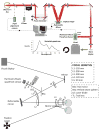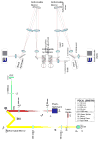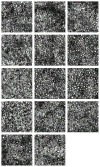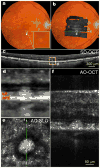Vision science and adaptive optics, the state of the field
- PMID: 28212982
- PMCID: PMC5437977
- DOI: 10.1016/j.visres.2017.01.006
Vision science and adaptive optics, the state of the field
Abstract
Adaptive optics is a relatively new field, yet it is spreading rapidly and allows new questions to be asked about how the visual system is organized. The editors of this feature issue have posed a series of question to scientists involved in using adaptive optics in vision science. The questions are focused on three main areas. In the first we investigate the use of adaptive optics for psychophysical measurements of visual system function and for improving the optics of the eye. In the second, we look at the applications and impact of adaptive optics on retinal imaging and its promise for basic and applied research. In the third, we explore how adaptive optics is being used to improve our understanding of the neurophysiology of the visual system.
Keywords: Adaptive optics; Retina; Retinal physiology; Vision science.
Copyright © 2017 Elsevier Ltd. All rights reserved.
Figures













References
Publication types
MeSH terms
Grants and funding
- F32 EY023496/EY/NEI NIH HHS/United States
- R01 EY018339/EY/NEI NIH HHS/United States
- R01 EY004395/EY/NEI NIH HHS/United States
- P30 EY019008/EY/NEI NIH HHS/United States
- R01 EY025231/EY/NEI NIH HHS/United States
- R01 EY024315/EY/NEI NIH HHS/United States
- R21 EY021903/EY/NEI NIH HHS/United States
- L30 EY017670/EY/NEI NIH HHS/United States
- CIHR/Canada
- R01 AG004058/AG/NIA NIH HHS/United States
- P30 EY003039/EY/NEI NIH HHS/United States
- R01 EY021166/EY/NEI NIH HHS/United States
- R44 AG043645/AG/NIA NIH HHS/United States
- R01 EY024239/EY/NEI NIH HHS/United States
- 294099/ERC_/European Research Council/International
- R01 EY014999/EY/NEI NIH HHS/United States
- R01 EY023591/EY/NEI NIH HHS/United States
- U01 EY025451/EY/NEI NIH HHS/United States
- R01 EY020901/EY/NEI NIH HHS/United States
- R41 EY028499/EY/NEI NIH HHS/United States
- R01 EY007624/EY/NEI NIH HHS/United States
- 339228/ERC_/European Research Council/International
- P30 EY001319/EY/NEI NIH HHS/United States
- R01 EY004367/EY/NEI NIH HHS/United States
- P30 EY012576/EY/NEI NIH HHS/United States
- R01 EY023581/EY/NEI NIH HHS/United States
- R01 EY022371/EY/NEI NIH HHS/United States
- R41 EY026105/EY/NEI NIH HHS/United States
- R01 EY017607/EY/NEI NIH HHS/United States
- R01 EY024378/EY/NEI NIH HHS/United States
- K99 EY026068/EY/NEI NIH HHS/United States
- WT_/Wellcome Trust/United Kingdom
- U01 EY025477/EY/NEI NIH HHS/United States
- R00 EY026068/EY/NEI NIH HHS/United States
- R01 EY014375/EY/NEI NIH HHS/United States
LinkOut - more resources
Full Text Sources
Other Literature Sources
Medical

